Our blog was created to help make the world of wine and beer easier to understand and fun to navigate. There are a million things to know in this industry, we just want to help you understand the latest news and trends from around the globe. So sit back with your favorite sip and let's go on an adventure.
Sauvignon Blanc Survival 6-Pack
Sauvignon Blanc Survival 6-Pack, SHOP HERE
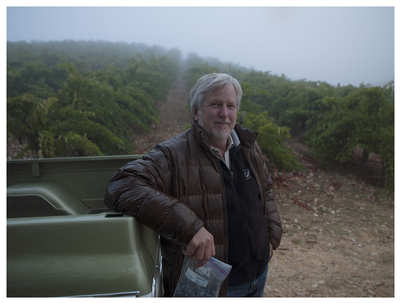
Frog’s Leap Sauvignon Blanc 2018
- Napa Valley
- Organic
- Dry farmed
- Harvested at 21.4 brix
- Fermented and aged in stainless steel
- 92 points Wilfred Wong
- Nectarine, granny smith, nettle
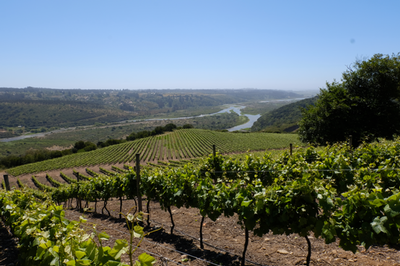
Leyda Sauvignon Blanc 2018
- Valle de Leyda, Chile
- 12 miles from the ocean
- Blend of 3 clones
- Harvested at 20.8-22.8 brix
- 50% macerated for 8 hours, 50% whole cluster pressed
- Fermented at 55 degrees in stainless steel
- Aged 5 months on lees
- Pomelo, tangerine, snow pea
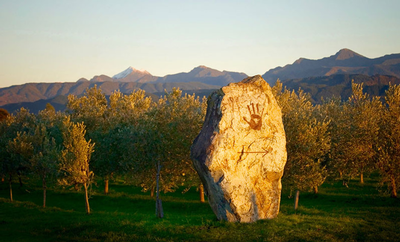
Seresin Sauvignon Blanc 2018
- Marlborough, New Zealand
- 91% Sauvignon Blanc, 9% Semillon
- 20-year-old vines
- Organic and biodynamic estate fruit
- Whole cluster pressed
- Native yeast fermentation in 80% stainless steel, 20% oak barrels
- Aged on lees for 9 months
- 91 points WA, 91 points Bob Campbell MW
- Guava, passionfruit, cut grass
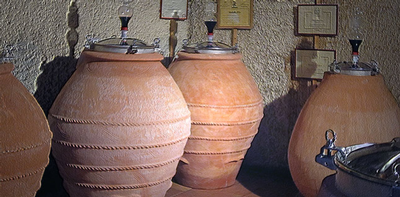
Chateau l’Escart Comtesse 2018
- Bordeaux blanc, Entre-deux-Mers between Garonne and Dordogne
- 80% Sauvignon Gris, 15% Semillon, 5% Muscadelle
- Clay, limestone, and gravel
- Biodynamic
- Vines averages 45 years old
- Built in the 18th century
- Native yeast fermentation
- Meyer lemon pith, white flowers, crushed rock
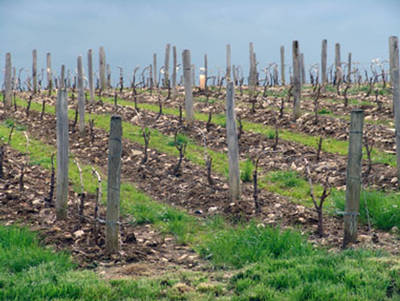
Regis Minet Pouilly-Fume Vieilles Vignes 2018
- 100% Sauvignon Blanc
- Kimmeridgian limestone
- 25-acre vineyard
- 30+-year-old vines
- Fermented in stainless steel
- Aged 6 months in stainless steel w/some lees stirring depending on vintage
- Native yeast fermentation
- 91 points WE
- White grapefruit, green apple, flint
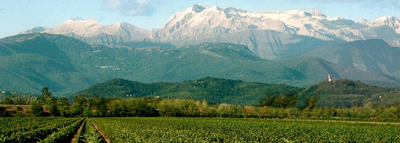
Vie di Romans Piere Sauvignon Blanc 2017
- Friuli, Italy
- 100 % Sauvignon Blanc, Italian clones
- Gravel and clay
- Fermented in stainless steel, aged 6 months on lees
- 91 points W&S
- Ripe lime, raw honey, lemon verbena
Sauvignon Blanc Survival 6-Pack, SHOP HERE
Let’s Talk About Vacqueyras ~ Valley of the Rocks
Shop the Vacqueryas Unicorn Duo HERE

Vacqueyras is situated within the land of heady, alcohol-driven Grenache-based blends – the Southern Rhone - penetrated by intense minerality and fleshy dark fruits offered by the signature stony terroir and the limestone of the Plateau de la Garrigues. Chateauneuf-du-Pape, Gigondas and Vacqueyras are all to be found here – and each express a fierce independence based on their unique and tiny appellations.
Vacqueyras is the baby Cru of the Rhone, the AOC having been established in 1990, after a series of AOC statuses, including Cotes du Rhône(1937) and Cotes du Rhone Villages(1955), as well as its own named Village in 1967. Located to the Northeast of Chateauneuf-du-Pape and just Southwest of Gigondas, Vacqueyras has its own distinct character, producing softer, fleshier wines than neighboring Gigondas. The Grenache here tends to ripen up to two weeks earlier here than in Gigondas and the land is a bit lower and flatter. The wines produced here tend towards a subtlety not found in the higher altitude, more robust Gigondas, and can take on charming, elevated notes of lush stone fruit. The Mediterranean climate here is governed by the famous Mistral winds which aid in keeping the vineyards clear from parasites and fungal disease.
Production in Vacqueyras is governed by strict rules and regulations. Growers are held to a basic yield standard of 36 hectolitres/hectare of vines, thus making Vacqueyras one of the lowest yielding regions in all of France. Additionally, all grapes must be hand sorted and the vines cultivated must be at least three years old prior to their first vintage.
(The town takes its name from the Latin Valléa Quadreria, which means valley of rocks).
Finding Vacqueyras and Sang des Cailloux
A true gem of Vacqueyras, let alone the entire Rhone Valley, Serge Férigoule’s cult-status winery, Sang des Cailloux, produces some of the most poetic wines in the region. This is the wine that I think of as benchmark Vacqueyras. Serge purchased the land of Sang des Cailloux in 1990 after working for the previous owner for 10 years. From that moment on, Serge’s devotion to organic and biodynamic practices altered the vineyards life significantly.
I first discovered Serge’s wines while working in the Portland restaurant scene (in Italian restaurants no less). Arriving nearly 10 years ago to work in the Walla Walla restaurant scene, I found camaraderie and a fierce affinity for Sang des Cailloux wines within the growing winemaker community at the time: this was the wine that young, up-and-coming winemakers came to drink at our bar after late hours in the cellar. And why wouldn’t they be? Serge’s wines are passionate, inky and mineral examples of a Vacqueyras that many have yet to discover and many in Walla Walla aim to emulate. Delve in!

Sang des Cailloux - The Blood of the Pebbles
Serge’s wines are organic, never see stainless steel or fining and filtration. Each of the three reds that he produces are given the Provencal name of one of his daughters (Serge will tell you himself that he is decidedly a Provencal himself, after all – from Avignon)!
The Sang des Cailloux winery is located on the Plateau des Garrigues, a famous limestone mass fabulous for vines, facing the Dentelles de Montmirail between Vacqueyras and Sarrians. Stirred by the Mistral winds, the 17 hectares of the estate are all AOC Vacqueyras.

The Wines
Domaine le Sang des Cailloux Vacqueyras Cuvee de Lopy 2016
80% Grenache, 20% Syrah
Chewable dense purple/blackberry in color. Fierce iron minerality, green olive, garrigue, horse sweat, rich red kirsch and pink peppercorn rising fiercely upwards on the nose along with black fruit. So intriguing! Some stewed black fruit on palate along with black cherry, viscous gumminess on palate. Chewy black licorice, heavily herbal (garrigue), stewed blueberry and blackberry, and tons of graphite. Fatty.
Drink now – 2025
Vacqueyras Rouge Cuvée Lopy:
- Lopy is the name of the farm where Serge Férigoule was born
- Vine age 55 – 65 years
- 4 hectares planted on clay, limestone and scattered galets roulés
- All grapes are harvested by hand
- Grapes are de-stemmed
- Natural fermentation (only using indigenous yeasts) in cement cuves with daily pump-overs
- Parcels are aged separately in 450-L barrels
- Wine is unfined and unfiltered
Domaine le Sang des Cailloux Vacqueyras Un Sang Blanc 2016
20% Clairette, 20% Grenache Blanc, 15% Bourboulenc, 15% Roussanne, 15% Marsanne, 15% Viognier
Super expressive Un Sang Blanc is a pretty rare wine. A blend of 6 grape varietals, this is a wine to be enjoyed young and with rich, opulent dishes. Lovely yellow color. Pop biscuits, butter, diesel, elderflower, yellow flowers and chamomile on the nose. A plump, rich and regal white with excellent tension. Sourced from a 10-year old 1 hectare vineyard.
Drink now.
Vacqueyreas Blanc Un Sang Blanc:
- Vine age 10 years
- 1 hectare planted on clay, limestone and scattered galets roulés
- All grapes harvested by hand
- Wine is vinified in 450-L barrels
- Lees are stirred and the wines completes malolactic fermentation
- Aged for 12 months in 1 – 3 year old barrels
- Wine is unfined and unfiltered
Shop the Vacqueryas Unicorn Duo HERE
Adventures with Trousseau
Trio of Trousseau

Eyrie Vineyards, Willamette Valley
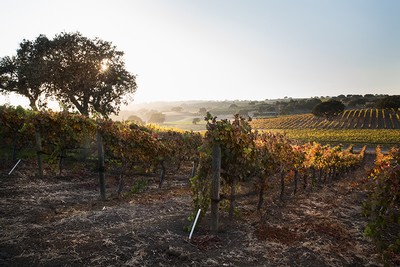
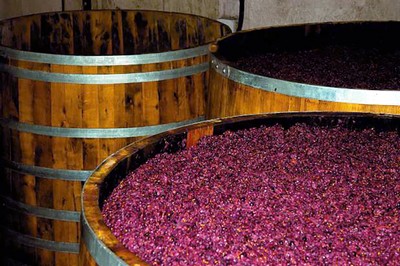
Stolpman Vineyards, Santa Barbara Domaine Tissot, Jura, France
Trousseau is somewhat of a mystery to many wine drinkers. Indigenous to the Jura region of France, in the town of Montigny-les-Arsures, the dark-skinned grape varietal has quite the history in Europe and is known to have been cultivated for at least 200 years under a variety of names. Curiously, until recently it has most widely been known in Portugal as Bastardo where it is made into dry red table wines as well as their most famous exports, Porto and Madeira. In Spain, it can be found under other names, Merenzao and Verdejo Negro, where it is used both alone and in red blends.
The most compelling Trousseau are those that can be coaxed into a subtle and balanced expression of tart red fruit, minerality and mossy earth. Trousseau can easily become a high-octane wine, due to the naturally abundant sugars in the grape varietal. Due to this, it can be considered fully ripe and ready to pick when at a lower sugar level than other varietals, thus producing a wine that is higher in acid with less alcohol.
I first discovered Trousseau while “palate trouncing” through the wines of the Jura in my first years in the restaurant world. I was instantly taken by these unusual and rustic wines, at times confused by their strangeness and curious as to what made them so much different than the polished New and Old World wines to which I’d become so accustomed. The initial rawness and brutality impressed but intimidated me. I was confused but not put off. As I began to dig deeper into the world of Jura wine, I discovered there existed a subtlety and odd grace to these wines that I had never had the opportunity of tasting. Odd grace – like an elephant on ice skates.
Let’s not beat around the bush: I have fallen for Trousseau. I am drawn to varietals with strange minerality and evocative dark forest matter, bright and light fruit piercing through the undergrowth to create a truly compelling wine. It can take on notes of light and bright sour cherries, ripe red fruit and expiring green matter or, depending on vinification technique, become a pungent, alcohol-driven, red fruit beast in need of a good chill. It is the forgotten street poet of grapes – full of nuance, easily irritable (thus “Bastardo”), and waiting for recognition of its subtle, easily-overlooked beauty.
New World winemakers are clearly catching on to the appeal of the varietal and Trousseau plantings are popping up with established producers’ names attached throughout the West Coast of the U.S., notably in regions where Pinot Noir, Gamay and other Burgundian varietals have shown success.
In this trio of wines, I have chosen to include Trousseau from its ancient birthplace – the Jura – as well as two of its more recent homes, California and Oregon. By highlighting an essential Jura producer alongside two groundbreaking New World producers, I hope to open a window and offer us a glimpse into the future growth and style flexibility of Trousseau in the modern wine world as we know it. Here is a remarkably unusual chance to explore this oft-forgotten varietal through the artistry of some truly inspired winemakers of our present time. I hope you love them as much as I do.
For the wine drinker who appreciates Pinot Noir and Gamay, these wines should easily appeal. This is food wine: gracefully footed with delightful acid and bright, pungent fruit expression, offering excellent pairing opportunities. These may all be considered natural, organic wines.
Pair Trousseau with: Game birds, smoked pork, berry reduction sauces, paté, or hard cow’s milk cheese (Morbier, e.g.).
“Bring in the bottled lightning, a clean tumbler, and a corkscrew.” - Dickens
Cheers,
Emily Riley
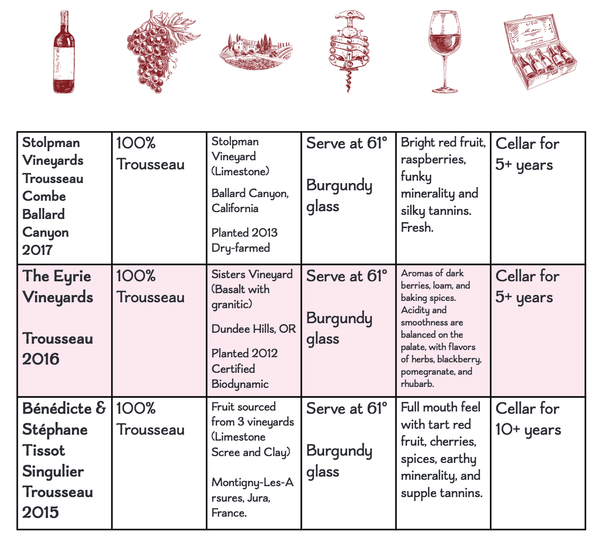
Trio of Trousseau
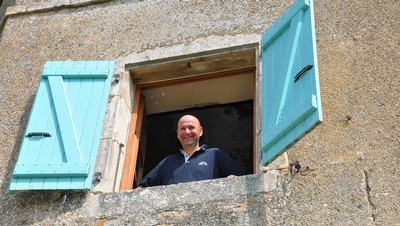
2015 Trousseau ‘Singulier’
Bénédicte & Stéphane Tissot
Bénédicte & Stéphane Tissot produce some of the most intriguing and delightfully mysterious wines of the Jura (Arbois) region in France on their 100 acres of vineyards. Biodynamically certified with Ecocert and Demeter, the Domaine takes painstaking measures to grow, harvest and vinify their grapes in a manner that reflects the utmost respect for their home.
The Trousseau for the ‘Singulier’ is sourced from 3 famous South and East-facing vineyard sites planted on limestone/clay soils. The age of the vines dates back to 1930. Grapes are manually harvested and bottled without fining or filtration. These are incredibly pure, low-intervention wines with a laser-sharp focus on the Jura’s unique terroir and their artful expression of it.
The Trousseau ‘Singulier’, brownish-garnet in color, reminds us of aged Nebbiolo at first sight. With a nose of wild red berry, crushed granite, old charred wood, mossy wet earth, damp green herb, and freshly foraged mushrooms, this is a wine that permeates the senses. On the palate one finds bright and tart red fruit – cranberries and raspberries – with a structured tannic backbone and an earthy, fresh minerality. Finishes with black licorice and molasses on the back palate.
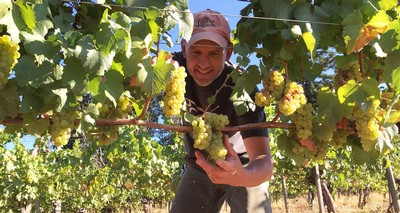
2016 Trousseau
Eyrie Vineyards
Eyrie Vineyards is a special winery. David Lett (1939 – 2008), the founder of Eyrie, was the first to plant, cultivate and vinify both Pinot Noir and Pinot Gris in Oregon, winning them multiple accolades over the years. His son, Jason Lett, took over as winemaker in 2005 and proceeded to plant additional varietals and introduce wild yeast fermentations to Eyrie’s winemaking philosophy. Eyrie Vineyards is certified organic/biodynamic.
Inspired by the winemaking and varietals of France’s Jura region, Eyrie Vineyards planted the Willamette Valley’s first Trousseau vines in 2012. The vividly red wine has aromas of dark berries, loam, and baking spices. Blackberries and brambles, along with tart red fruit on the nose. Stemmy undergrowth. Superbly unctuous on the palate - bright raspberry and rhubarb – with a beautiful mouthfeel, lightweight tannins, and perfectly balanced acidity. Worthy of laying down in the cellar. 2016 is the second vintage of this intriguing wine.
6 months in neutral French oak, full indigenous malolactic.

2017 Combe Trousseau
Stolpman Vineyards
“Combe” refers to a sheltered valley within a vineyard. In his collaboration with Pete Stolpman of Stolpman Vineyards, famed sommelier Rajat Parr has created a truly unique and enjoyable wine with Combe Trousseau. Having convinced Stolpman Vineyards to plant Trousseau in Ballard Canyon,
California, Rajat Parr helped to create a wine that is expressive of both terroir and the Master Somm’s well-respected sensibilities.
Stolpman Vineyards has 153-acres of vineyard land in the Santa Barbara County AVA, planted along limestone ridges that are meticulously dry-farmed.
This is the 4th vintage of Combe Trousseau, incorporating two separately planted vineyard blocks, the second having been planted in 2014. The 2017 Combe Trousseau was picked early – at the end of August – and thus spared the September heat spike that the Canyon experienced. Accentuated by its time spent in concrete fermenters, the wine shows freshness, bright red fruit quality, funk, and a lively minerality.
70% destemmed, 30% whole cluster. Aged in neutral French 500L Puncheons.
Devium & Delmas - Walla Walla Curator Club
In this inaugural shipment of the Curator Club, we have chosen to feature two exceptionally dedicated, energetic producers with tons of promise on the horizon: Delmas and Devium.
The wines of Delmas first came to my attention 8 years ago. Steve and Mary Robertson founded SJR Vineyard in 2007 on 10 acres “in the rocks” and, subsequently, created their flagship Syrah. Steve was at the forefront of the movement to create an AVA within Walla Walla solely defined by the characteristics of its terroir, and the first of its kind to cross state boundaries. The Rocks District of Milton-Freewater AVA was granted final TTB approval in 2015. The SJR Vineyard sits firmly on the western boundary of the AVA and Steve remains a vocal advocate for the region throughout the wine industry. Brooke Robertson, Mary and Steve’s daughter, heads up viticultural operations and plans to take the helm as head winemaker in the next five years. In the meantime, “Dad and I tag-team the winemaking protocol” according to Brooke. Billo Naravane of Rasa Vineyards has been the consulting winemaker throughout the project and remains close. On the horizon for Delmas? An estate Viognier and Grenache. We can’t wait.
Devium Wines is the passion project of the exceptionally talented Keith Johnson. A graduate of the Enology Program at the WWCC in 2011 (a year before Brooke Robertson), Keith has quickly proven himself to be one of the rising stars of the Walla Walla wine industry, though he’s so modest you would hardly know it. Spending time with Keith in the cellar talking about winemaking might just be one of my favorite things to do while out on a winery visit in Walla Walla. When not acting as Production Winemaker for Sleight of Hand Cellars, he devotes his time to producing his focused and inspired low-intervention wines. In fact, the reason Devium exists at all is due to the pure chance of the senses. While on a visit to French Creek Vineyard for Sleight of Hand’s old vine Chardonnay back in 2011, Keith was immediately impressed by the vineyard and vineyard manager, Damon Lalonde. Keith picked the French Creek Mourvédre’s first fruit in 2015 after an epiphany smelling the Syrah from the same site and the impetus to start the Devium project was created. Keith told me, “It’s ultimately about the vineyard, not about me.”
Delmas Producer Profile
Family owned and operated, Delmas is the realization of the Steve & Mary Robertson's dream, 35+ years strong, to honor a distinctive place, a distinctive taste. Born of unique geology found within The Rocks District of Milton-Freewater, as well as the climatic eccentricities of the Walla Walla Valley, Delmas is dedicated to producing exceptional wines of enduring value. Elegance is preferred to power and exoticism at Delmas; restraint, nuance, and those impossible-to-define, (pleasurable), qualities that elevate all great wines. Brooke Robertson accentuates the importance of the SJR Vineyard to her family’s vision: “The most important part of what we do is the family factor and our estate vineyard.”
Devium Producer Profile
Keith Johnson doesn’t like points given to wines and avoids it whenever possible. He’s confident in his wines’ pedigree and he should be – they’re deeply thoughtful and personal. Founded in 2015, Devium is his wild brain-child, devoted to creating something unique in the Walla Walla Valley, a commitment to minimalist winemaking, early picking and special vineyards. He doesn’t do blending trials for these wines either, believing that his wines should speak to “a moment in time and a specific terroir” that blending might obscure. It is about tradition and history, spontaneous fermentations and foot stomping. Keith Johnson is a purist and expresses his devotion to his craft with the utmost care in the production of these beautiful wines.
Trousseau - The Artful Dodger
Trousseau is somewhat of a mystery to many wine drinkers. Indigenous to the Jura region of France, in the town of Montigny-les-Arsures, the dark-skinned grape varietal has quite the history in Europe and is known to have been cultivated for at least 200 years under a variety of names. Curiously, until recently it has most widely been known in Portugal as Bastardo where it is made into dry red table wines as well as their most famous exports, Porto and Madeira. In Spain, it can be found under other names, Merenzao and Verdejo Negro, where it is used both alone and in red blends.
The most compelling Trousseau are those that can be coaxed into a subtle and balanced expression of tart red fruit, minerality and mossy earth. Trousseau can easily become a high-octane wine, due to the naturally abundant sugars in the grape varietal. Due to this, it can be considered fully ripe and ready to pick when at a lower sugar level than other varietals, thus producing a wine that is higher in acid with less alcohol.
I first discovered Trousseau while “palate trouncing” through the wines of the Jura in my first years in the restaurant world. I was instantly taken by these unusual and rustic wines, at times confused by their strangeness and curious as to what made them so much different than the polished New and Old-World wines to which I’d become so accustomed. The initial rawness and brutality impressed but intimidated me. I was confused but not put off. As I began to dig deeper into the world of Jura wine, I discovered there existed a subtlety and odd grace to these wines that I had never had the opportunity of tasting. Odd grace – like an elephant on ice skates.
Let’s not beat around the bush: I have fallen for Trousseau. I am drawn to varietals with strange minerality and evocative dark forest matter, bright and light fruit piercing through the undergrowth to create a truly compelling wine. It can take on notes of light and bright sour cherries, ripe red fruit and expiring green matter or, depending on vinification technique, become a pungent, alcohol-driven, red fruit beast in need of a good chill. It is the forgotten street poet of grapes – full of nuance, easily irritable (thus “Bastardo”), and waiting for recognition of its subtle, easily-overlooked beauty.
New World winemakers are clearly catching on to the appeal of the varietal and Trousseau plantings are popping up with established producers’ names attached throughout the West Coast of the U.S., notably in regions where Pinot Noir, Gamay, and other Burgundian varietals have shown a success.
For the wine drinker who appreciates Pinot Noir and Gamay, these wines should easily appeal. This is food wine: gracefully footed with delightful acid and bright, pungent fruit expression, offering excellent pairing opportunities.
Pair Trousseau with: Game birds, smoked pork, berry reduction sauces, paté, or hard cow’s milk cheese (Morbier, e.g.).
“Bring in the bottled lightning, a clean tumbler, and a corkscrew.” - Dickens
